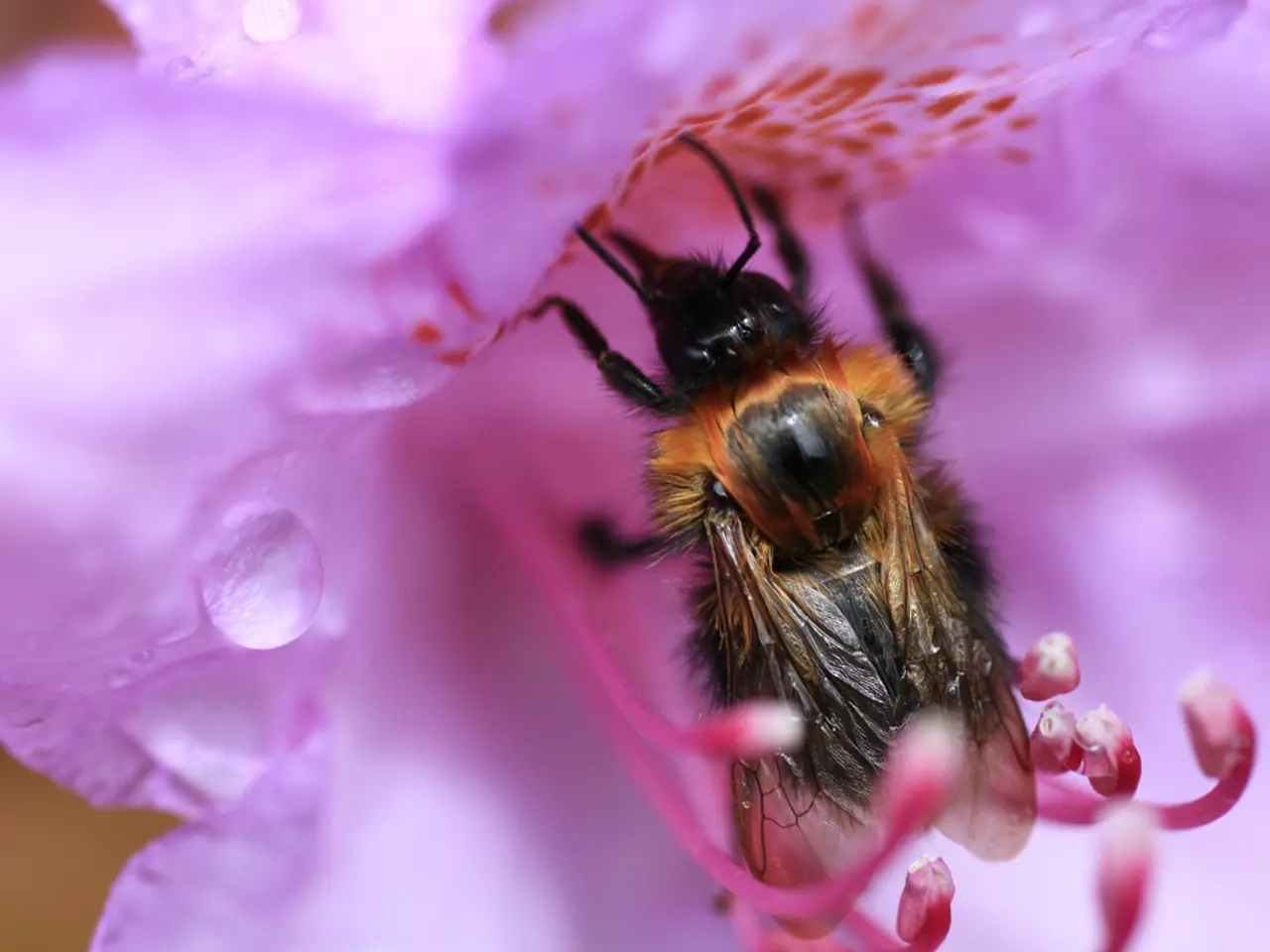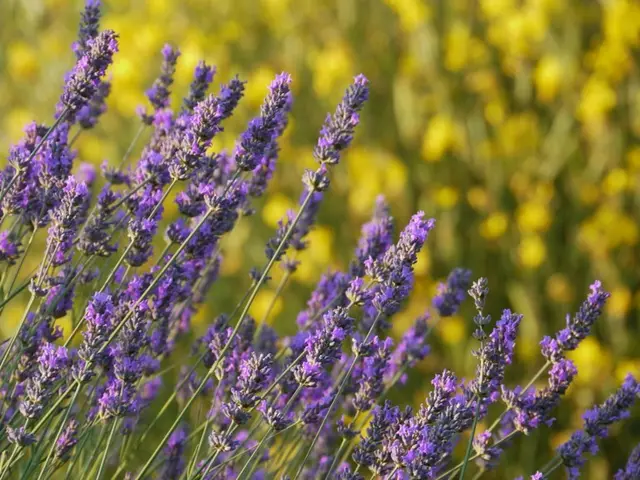Managing Powdery Mildew on Monarda Plants
Monitoring Bloom Assessments: Monarch Butterflies Found to be the Most Delicate Signal of Flower Dew Presence
The appearance of a white, powdery coating on Monarda plants is a telltale sign of powdery mildew, a fungal disease that can quickly spread through spores in the air. This article will discuss effective methods for treating and preventing powdery mildew on Monarda plants, as well as alternative organic methods to maintain a healthy garden ecosystem.
Treating Powdery Mildew with Colloidal Sulfur
Colloidal sulfur is a potent tool against fungal diseases and can be used as a spray to treat powdery mildew directly. To apply, follow these steps:
- Application Method: Spray the colloidal sulfur solution onto affected areas, ensuring it does not come into contact with flowers or buds, as it can cause damage.
- Precautions: Avoid spraying when the temperature is high, as sulfur can be phytotoxic at higher temperatures.
- Timing: Apply the sulfur spray when the first signs of powdery mildew appear, and reapply every 7-10 days as needed to prevent the spread of the disease.
Preventing Powdery Mildew
Preventing powdery mildew requires a combination of good gardening practices and careful plant selection.
- Good Garden Hygiene: Remove any infected leaves or debris to prevent the spread of spores.
- Cultivar Selection: Choose Monarda cultivars that are resistant to powdery mildew, such as Monarda fistulosa 'Claire Grace' or Monarda 'Violet Queen'.
- Environmental Conditions: Ensure Monarda plants receive adequate air circulation and are grown in conditions that are not overly humid or damp, as these conditions encourage the growth of powdery mildew.
- Organic Sprays: Consider using other organic fungicides like neem oil or potassium bicarbonate-based sprays as alternatives or in combination with sulfur for a multi-pronged approach.
Alternative Organic Methods
- Neem Oil: Neem oil prevents the germination and infiltration of fungal spores into leaf tissue. Follow the label instructions for application.
- Potassium Bicarbonate: This acts as a contact fungicide and raises the pH on leaves, making it harder for powdery mildew to thrive. Mix 1 tablespoon of potassium bicarbonate with 1 teaspoon of Castile soap in 1 gallon of water.
By combining these methods, you can effectively treat and prevent powdery mildew on Monarda plants while maintaining a healthy garden ecosystem.
Monarda, also known as bee balm or bergamot, is particularly sensitive to powdery mildew. It is important to not delay in treating Monarda and performing preventive treatments on the entire garden and vegetable patch to prevent the spread of the disease. If the white, powdery coating on Monarda is noticed, immediate action should be taken to treat the plant. Untreated powdery mildew can reduce the yield and health of vegetable and ornamental plants.
[1] Gardening Know How. (n.d.). How to Control Powdery Mildew on Monarda. [Online]. Available: https://www.gardeningknowhow.com/plant-disease/common-diseases/powdery-mildew-on-monarda.htm [2] Monrovia. (n.d.). Monarda 'Violet Queen'. [Online]. Available: https://www.monrovia.com/product/monarda-violet-queen/407595 [3] The Spruce. (n.d.). How to Get Rid of Powdery Mildew on Monarda. [Online]. Available: https://www.thespruce.com/how-to-get-rid-of-powdery-mildew-on-monarda-1449138
Read also:
- Avoidable foods during shingles: Hot, spicy dishes, sugary items, and so on
- Connection between Broccoli Consumption and Gout Management: Key Insights
- Home Studio Allergy Management: A Comprehensive Guide for Designers
- Gambling enthusiasts can explore a variety of Playtech slots offered by Hollywoodbets.




